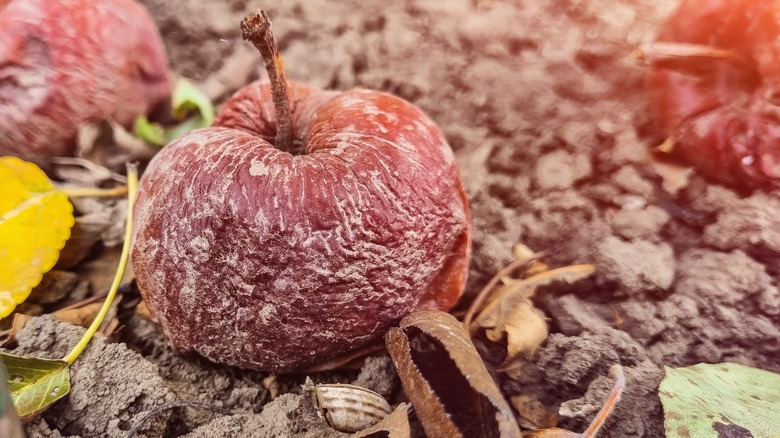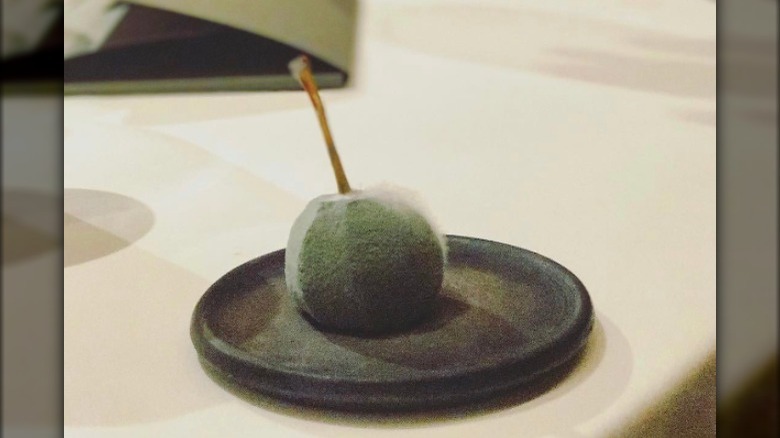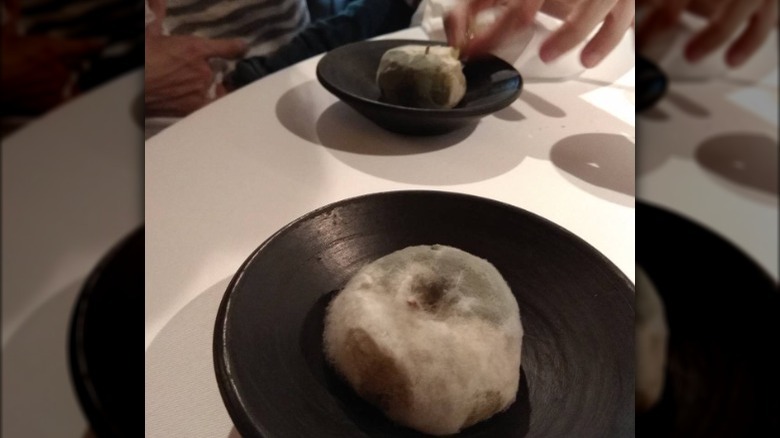The Michelin Restaurant That Serves Moldy Apples On Purpose
Nothing puts a damper on the excitement surrounding dinnertime quite like the discovery of a mold colony. You could have all the ingredients for an absolutely epic taco party, but find the meal in jeopardy when you open up the tub of sour cream to find a minefield of garish, greenish splotches. Sure, we like mold when it's in our penicillin, but generally speaking, it isn't thought of as the most appetizing organism around.
In the culinary world, mold isn't necessarily a bad thing. It's okay to eat a lot of moldy foods. A number of cheeses are made using mold — blue cheese is probably the most well-known example of fungus infusion. In Europe, mold is essential to the process of curing sausage, per Smithsonian Magazine. However, at one restaurant, even those diners who are particularly pro-fungus may find their taste buds tested by an expertly crafted piece of moldy fruit.
Mold is elevated to regal status at Mugaritz
According to Fine Dining Lovers, Spanish chef Andoni Luis Aduriz created a famous, or perhaps infamous, moldy apple dish called Noble Rot for his Michelen-starred restaurant Mugaritz. Noble rot is the common name of Bortrytis cinerea fungus, which causes grapes to shrivel and sweeten, per VinePair. When handled properly, it can be a useful tool for vintners who ferment dessert wines.
Noble Rot, the dish, doesn't use Bortrytis cinerea to cause its signature shroud of mold. Rather, Penicillium roqueforti and Penicillium candidum are intentionally introduced to each apple, as the Mugaritz team explained to Eater. However, the rotten dessert is served along four botyrized dessert wines, each from a different nation.
The Encyclopedia of Dairy Sciences notes that Penicillium roqueforti is often used as a cheese culture (via ScienceDirect). Does Roquefort ring a bell? Penicillium candidum is used in making Camembert cheese, The Cheese Connection tells us.
Fungus in the world of fine dining
Noble rot received mixed reviews, as reviewers were torn over the fuzzy fruit, per HuffPost. However, the aptly-named food blogger Rotten Apples and Other Delights wrote that the Noble Rot was the highlight of her meal at Mugaritz.
However, Mugaritz is not the only restaurant that has had the gumption to experiment with mold on their menu. According to the Washingtonian, a Japanese mold called koji is popular with a number of fine dining chefs. At Washington, D.C.'s Michele's, Matt Baker cures the meat for his smash burger patties in the mold. In the same city, Ryan Ratino pairs koji with the majority of his dishes at Jônt. A number of chefs in Mexico and the Southern United States use Ustilago maydis, also known as huitlacoche, corn smut, and devil's corn, a black, pebbled growth often considered a scourge of corn crops, in their food (via NPR).
Before you start to think that the rotten leftovers in the back of your fridge are actually fine dining, it's worth remembering that these chefs are professionals. Here's how to tell if your food is moldy.


